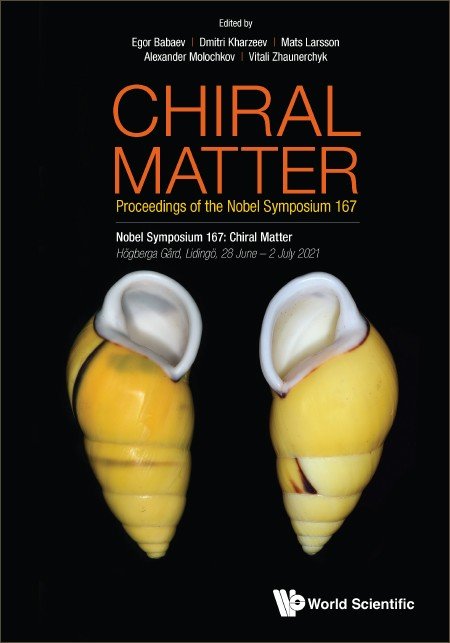Parity Violation in Chiral Molecules: From Theory towards Spectroscopic Experiment and the Evolution of Biomolecular Homochirality
Dedicated to the memory of Richard R. Ernst (14 August 1933 - 4 June 2021 (NP Chemistry 1991) after lecture presented at Nobel Symposium 167 on chiral matter, Stockholm, Sweden 28 June - 1 July 2021)
Molecular chirality is related to the symmetry with respect to space inversion, which was assumed to be fundamental in the theory of chemical bonding and stereochemistry. The symmetry leads to a conservation law for the quantum number parity as a constant of the motion. We know today that there is in fact a slight asymmetry, which leads to a non-conservation of parity or parity violation. We start with an introductory discussion of three fundamental questions on symmetry, relating physics to molecular quantum dynamics and stereochemistry: (i) To what extent are the fundamental symmetries and conservation laws of physics and their violations reflected in molecular quantum dynamics and spectroscopy, in general? (ii) How important is parity violation – the violation of space inversion symmetry - for the quantum dynamics and spectroscopy of chiral molecules, in particular? (iii) How important is parity violation for biomolecular homochirality, i.e. the quasi exclusive preference of L-amino acids and D-sugars in the biopolymers of life (proteins and DNA)? The observation of biomolecular homochirality can be considered to be a quasi-fossil of the evolution of life, the interpretation of which has been an open question for more than a century, with numerous related hypotheses, but no definitive answers. We shall briefly discuss the current status and the relation to the other two questions. The discovery of parity violation led to important developments of physics in the 20th century and is understood within the standard model of particle physics, SMPP. For molecular stereochemistry it leads to the surprising prediction of a small energy difference D of the ground state energies of the enantiomers of chiral molecules, corresponding to a small reaction enthalpy for the stereomutation between the R and S isomers(enantiomers). With exact parity conservation this reaction enthalpy would be exactly zero by symmetry. Theory predicts D to be in the sub-femto eV range, typically, depending on the molecule (about D = 200 ± 50 aeV for ClSSCl or CHFClBr, corresponding to a reaction enthalpy of about 20 ± 5 pJ/mol). We have outlined four decades ago, how this small energy difference D might by measured by spectroscopic experiments, and recent progress indicates that experiments might be successful in the near future. We report here about the development of the quantitative theory for predicting D and we then discuss the development and current status of our experiments including alternatives pursued in other groups and the possible consequences for our understanding of molecular and biomolecular chirality as well as the design of molecular quantum switches for a possible future quantum technology and possible tests of CPT symmetry.



